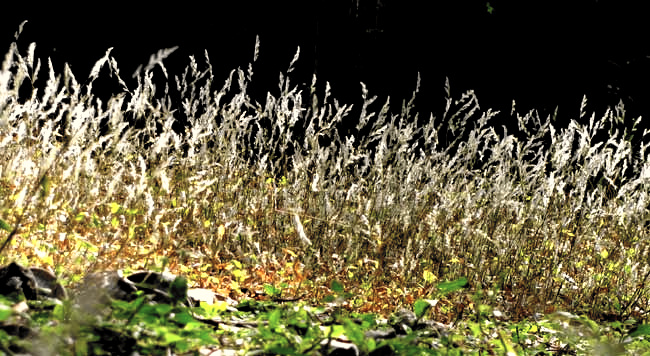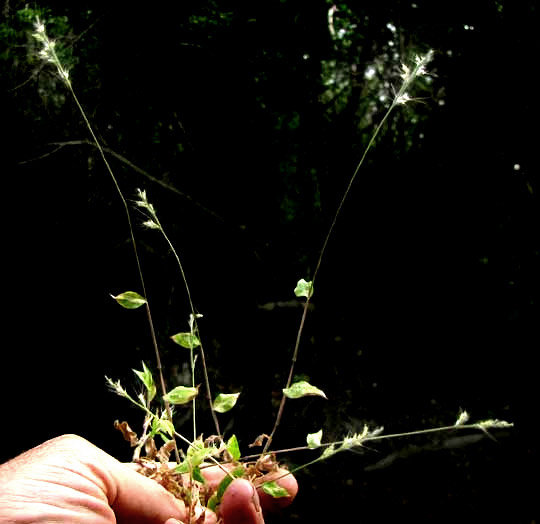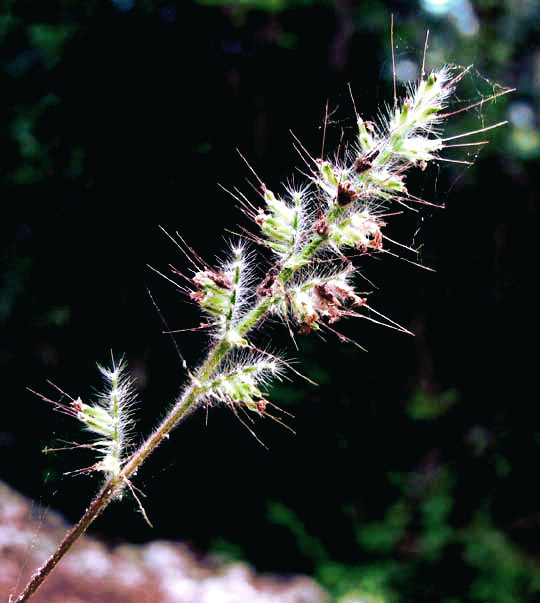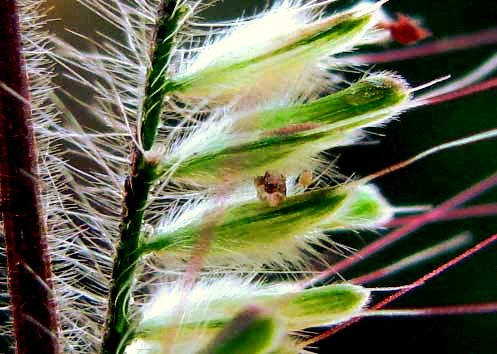Excerpts from Jim Conrad's
Naturalist Newsletter

from the December 5, 2010 Newsletter issued from Hacienda Chichen Resort beside Chichén Itzá Ruins, central Yucatán, MÉXICO; limestone bedrock, elevation ~39m (~128ft), ~N20.676°, ~W88.569°
WOODS-GRASS
For several weeks a certain creeping, mat-forming grass has formed an attractive, green carpet on shadowy woods floors where the gardeners have removed underbrush. Now the grass is flowering and multitudes of fuzzy grass-flower heads catch the sunlight, as above.
Closer up you can see the grasses' short but wide leaves distantly spaced on slender stems, and flowering heads consisting of six or so racemes clustered at the stems' tips, as shown below:

This is one of the most common, weedy grasses in all of tropical America as well as other of the world's tropics. It's OPLISMENUS BURMANNII. It doesn't seem to have a widely accepted English name, but other species of Oplismenus occur in North America and sometimes they're called Woods-Grasses, and our species is especially common in open woods, so that's the name I'll use here. Now at the beginning of the dry season our Woods-Grass is dropping its mature flowers and dying back, forming large brow splotches, like crabgrass up North after the first frost.
If you know grass-flower anatomy -- how the item analogous to a normal flower is called a floret, that one or more florets are gathered above a pair of glumes in a unit known as a spikelet, etc. -- you may enjoy studying this species' flowers, for grass-flower anatomy up close always surprises with its unexpected symmetries, colors, textures and forms. Before diving into the flowers you may want to review grass-flower anatomy at www.backyardnature.net/fl_grass.htm.

Above you can see an inflorescence on which ten or so racemes arise. A raceme is a flower cluster in which a central axis bears stalked flowers -- the flowers are on "stems," or pedicels. You can see four spikelets on very short but discernable pedicels below:

Each spikelet consists of one basal sterile floret and one fertile floret. It's hard to make out these details in the picture, but that's what you'd find with a binocular microscope and a probe if you could tease the parts apart. Now look at some florets removed from their spikelets' rachilla below. A neat feature there is how the lemmas and paleas curl down at their margins -- they're " involute." Also, they're pretty hairy. If you've studied lots of grass flowers you recognize that these florets are unusual with their fuzzy, long-awned, shoehorn-like lemmas and paleas.
